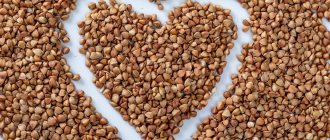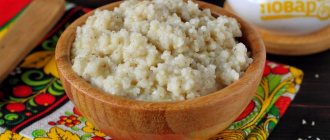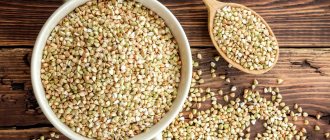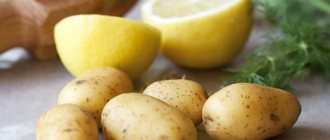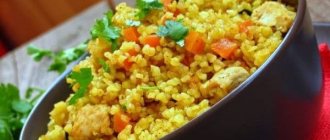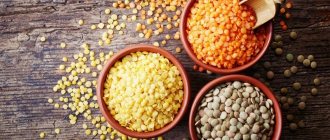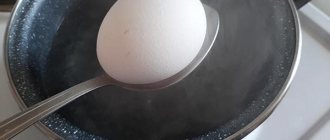Washing rice in a bowl of water: Pixabay Properly cooked rice is not only incredibly tasty, but also very healthy. At the same time, it is very important to prepare the cereal according to the rules so as not to spoil the taste of the rice. And here many questions arise: to wash or not to wash cereals, why wash rice, which varieties do not need such a procedure? In the article you will find detailed information on an exciting topic.
Do I need to rinse steamed rice?
You can prepare a dish correctly by first determining which type of rice is suitable for a particular delicacy. The most popular types of grains are:
- Wild rice is considered one of the healthiest grains. Its specific taste may be unusual for many. Suitable for preparing pilaf, cereal soups, side dishes.
- Basmati is a fairly expensive variety of rice, but its taste and aroma have captivated many. It is great for side dishes, as its long, thin grains do not stick together during cooking.
- Round grain rice. During cooking, its grains stick together, forming a single mass. Therefore, this type of cereal is ideal for preparing porridges and puddings.
- Long grain variety. It makes good side dishes.
- Medium grain rice. It is best used when preparing first courses, as well as risotto.
How to soak properly
Before proceeding directly to creating a dish from this component, it must be prepared. This step includes washing as well as soaking the rice.
The component must be washed under water in order to remove small debris and dust from the cereal. This procedure helps give the rice a rich and vibrant taste. You can wash the cereal either in a sieve or in a deep bowl, but the second option is considered more convenient. Having poured the cereal into a bowl, fill it with cold water and stir the grains a little with your hand. Rinse the rice up to 5 times (filling with fresh water each time) until the liquid becomes clear.
You need to soak the cereal to improve its color and also to make the dish more crumbly. If the rice absorbs moisture, it will cook much faster. However, you should not soak it, for example, when preparing risotto. If the procedure is still necessary, 1 glass of cereal should be filled with 2 glasses of water. Then you should leave the cereal to soak for 30 minutes. After the time has passed, the liquid is drained from the bowl and the grains are dried with a towel.
Depending on the type of cereal, it needs to be soaked in different ways:
- After washing in cold water, long rice (but not thin rice) is scalded with boiling water and then poured again with cold liquid. After which the product is ready for cooking.
- Round short rice is soaked for 15 minutes in warm water and then washed again with colder water. It is great for making porridges, as well as fillings for pies.
- Before cooking, small (virtually transparent) thin rice is soaked in cold salted water for 5 hours, and only then they start cooking it.
A few recommendations for delicious pilaf
Knowing how to properly make a side dish is quite important. But this is not all that is needed to make real pilaf that your family and friends will admire. Here are some more useful tips that will certainly be very useful to you:
- Some chefs use beef to make pilaf. But this is not the best choice, since the dish turns out too dry. It is much better to take beef or pork. Chicken is also allowed if that's your preference.
- The oil used is important. Uzbeks always take two - cotton and sesame, and also always add fat tail fat. This results in a richer aroma.
- To ensure a successful pilaf, it is recommended to use a cast iron, copper or aluminum cauldron. This may seem unusual, but the material of the cookware has a great influence on the taste of the dish.
These tips can help you make the perfect pilaf that has amazing texture and flavor. Stick to them, and you can please your family with an incredibly tasty dish, using the cheapest grains and spending a minimum amount of time and effort.
So, rice should definitely be soaked. The purpose of washing and soaking grains is well known: the grain is cleared of unnecessary starch, acquires an interesting shade, becomes crumbly and makes the taste of the dish more vibrant and appetizing. The suitable temperature for soaking in water is 60 C. Steamed rice grains can also be soaked, but this is not necessary. In addition to everything, you need to wash any grains. First, this is used for hygienic purposes - to clean dust, dirt and possible chemicals. substances.
pexels
Required condition
Anyone who is at least a little familiar with cooking knows that before you start cooking, rice must be washed. This procedure takes a little time, but gives confidence in the purity of the finished dish.
It is only at first glance that it seems that the rice grains are absolutely pure. Sometimes their snow-white color is misleading, which is partly due to grinding, as well as the presence of starch in the surface layer. In fact, any cereal carries dirt with it. To make sure of this, you just need to pour it into a bowl, and then add a little water and stir well. The liquid will immediately become cloudy. Partly this is starch, but mainly there are mechanical impurities resulting from production, storage and transportation. To remove them, wet treatment must be carried out repeatedly. It is considered sufficient to pour the required amount of cereal with water 7 times, and then drain it after thoroughly stirring. The first 3-4 times you can use hot liquid, and in the final stages - cold.
Features of cooking in a saucepan
In order for the product to turn out to be a crumbly side dish, be sure to rinse the rice after cooking! To begin with, the component must be thoroughly rinsed in water. Then, observing the proportions (1 cup of grains and 2 of water), the cereal is poured into already boiling salted water. Next, place the pan on medium heat.
We must not forget that in order for the rice side dish to be tasty and, most importantly, crumbly, the cereal must be slightly undercooked. On average, the component should be cooked for approximately 20 minutes and do not forget to stir. After the required time has passed, the rice must be thoroughly washed. This manipulation will help wash out the starch from the sticky mass, making the side dish crumbly. If the rice is steamed, then there is no need to rinse it at the end of cooking!
How to wash buckwheat
Regardless of the manufacturer, grain crops are stored in barns and granaries until they reach store windows. Very often, employees of such premises treat surfaces with disinfecting solutions and mixtures to prevent the spread of pests. It is unlikely that you would want to consume such a product without first processing it.
Washing is a mandatory procedure
Even if you don't take phytic acid into account, it's worth at least removing the debris. For this purpose, many housewives carry out manual processing, sorting the grains with their hands. However, such methods are increasingly becoming a thing of the past.
Today, cereals are poured into a pan and the container is placed under running water. Grains of sand and small debris are much lighter than the grains themselves. The grain swells from the penetration of moisture, becomes even heavier and sinks to the bottom of the pan. Garbage and low-quality grain rise to the surface, being removed under the influence of water.
Washing should be done repeatedly, there is no exact number of repetitions of the procedure
It all depends on the quality of the raw materials. But the main factor indicating the completion of processing is crystal clear water without impurities.
As an additional option, it is recommended to wash the buckwheat through a metal sieve to completely eliminate the possibility of sand grains getting in. It is possible to partially sort through the grains by hand during washing, but care is required: if small debris is damaged, it will break up into several parts and completely remove it will be problematic. You can begin heat treatment of the product only after all manipulations have been completed.
There are exceptions: purchasing buckwheat in portioned bags for cooking completely eliminates additional washing and processing. Trusted manufacturers carry out all necessary procedures at the product packaging stage.
Special attention should be paid to washing green buckwheat
The procedure also needs to be repeated several times until clear water is obtained at the end of the process. According to the recommendations of experienced housewives, this type of buckwheat needs to be soaked for several hours in chilled boiled water.
Such actions are necessary for the germination of grains: only in this form does green buckwheat contain the maximum amount of nutrients.
After finishing soaking, the cereal needs additional washing. After a long stay of the grains in an aqueous environment, they swell and mucus forms on the surface. It is necessary to rinse green buckwheat until you are completely sure that this mucus is absent.
At the final stage of processing, the cereal is evenly distributed over a flat surface, leaving to dry for about a day. Heat treatment is possible only after the grains have completely dried.
Rules for cooking in the microwave
It’s quite easy to prepare a delicious dish from this cereal in a microwave oven. The process of its creation includes the following steps:
- Before cooking, the grains are thoroughly washed under cold water;
- the cereal is placed in a special microwave-safe bowl and filled with cold water (1:2);
- the liquid is salted to taste;
- under a closed lid at a power of 500 W, the dish is cooked for about 18 minutes (do not forget to stir the rice with a spoon twice during cooking);
- at the end of cooking, the dish should sit under a closed lid for 10 minutes, and then it should be stirred;
- There is no need to rinse the rice under water at the end of cooking.
Cooking method
You should rinse the kernels after cooking only if you need to get a crumbly side dish, grains for sushi, rolls or salad.
How the rice turns out and whether there will be a need for rinsing after cooking largely depends on the cooking method:
- You may end up with a sticky mass in the pan. If you want it to be crumbly, transfer the porridge to a colander and rinse until all the starch and gluten are washed out;
Important! Steamed food does not need to be rinsed.
- There is no need to rinse the kernels after microwave. Rinse them thoroughly under the tap, place them in a special bowl for microwave ovens and fill them with cold water in proportions of ½, add salt and spices to taste. Then turn on the power to about 500 W and the time is 15-18 minutes. At the end of the time, leave for 10 minutes and serve;
- pilaf or viscous milk porridge is most often prepared in a slow cooker. The cereal is washed, poured with three glasses of water per glass of rice and the required mode is selected. Most often there is no need to rinse after this;
- but crumbly kernels are obtained in a double boiler and used in the diet of adherents of proper nutrition.
Cooking cereals in a double boiler
You will get a fairly tasty and healthy dish if you cook it in a double boiler. Before heat treatment, the component is washed. Then it is poured into the required compartment. Rice is filled with water in a 1:1 ratio. The cereal should be salted to taste. After which the timer must be set for 30 minutes. There is no need to rinse the product at the end of cooking.
By choosing the most suitable method for cooking rice, you can easily get a dish that is healthy, tasty and satisfying! Thanks to the unique characteristics of this grain crop, it is loved by many fans of proper nutrition.
Expert opinion
Unfortunately, brown rice is not popular among our consumers. But only it can be considered a healthy product - everything useful is removed from white rice during its processing. By the way, in order to somehow increase the nutritional value of polished rice, manufacturers sometimes soak it with a vitamin solution. But it was possible to simply not remove the healthy rice shell. In general, I would recommend making your diet only from those foods that have not been subjected to unnecessary processing. And leave everything refined and polished in the store.
Inna Verbitskaya, nutrition specialist
Since ancient times, rice has been considered the main dish in Asian countries. Nowadays it is probably used in any kitchen in the world. Each housewife has her own secrets of preparing it. Many people think that they know how to cook rice, but often it doesn’t turn out perfect, so today I will share my recipes on how to cook rice correctly and the easiest recipes for dishes made from this incredibly popular and healthy cereal.
Using rice grains, you can prepare many delicious and healthy dishes: soups, porridges, pilaf and rolls. All these dishes require different types of rice. When choosing grains for a particular dish, you should take into account the cooking features and the expected result. It is important to remember that each variety of rice has its own properties.
Cooking rules
Cooking rice is a special process with many subtleties. For example, you can cook such a product:
- in the microwave;
- in the oven;
- in a saucepan on the stove.
The last option is used most often by housewives. But not everything is so simple with him either. Before you figure out how to cook rice in a pan, you need to determine what dish it is intended for. Most often it is a side dish or base for a salad. In this case, you should choose parboiled or long grain rice. It is these two types that will allow you to get a truly crumbly product.
After this, you need to settle on one of two cooking options known in cooking:
The difference between them is that before cooking the cereal should be filled with water so that the liquid is 2-3 centimeters above the level of the product. In this state, the rice must be kept for 1 hour. The moisture will be partially absorbed, and the cereal will increase in volume. After this, you need to add water again so that their levels are equal, and bring to a boil over heat. Having reduced the flame, you need to wait until the liquid evaporates. This may take 10-30 minutes. Finally, the container with the finished product should be tightly wrapped and set aside for 20 minutes. The first option will tell you how to cook rice in a pan without soaking. You just need to pour the cereal with water in a ratio of 1:2 and cook in the same way. At the final stage, the product can be washed with lukewarm water. But you don't have to do this.
To avoid rinsing
If you need to get a crumbly porridge, you can prepare it in such a way that you don’t have to wash it out. There are the following methods for this:
- Heat the rice grains in a thick-bottomed pan greased with vegetable oil, stirring until translucent. Then pour boiling water or broth. As a result, the side dish will be aromatic and crumbly.
- Cook the porridge until half cooked in a heat-resistant pan, add oil, transfer to the oven, heated to 180 degrees and bake until done.
- Pour two volumes of water over the cereal and cook over low heat until the liquid has completely evaporated. Place a little oil in a pan and leave the rice covered until done.
Whether to rinse rice or not depends on how you want it to end up. Just do not do this under any circumstances under an open tap, so that microbes from the water do not get into the prepared food.
What kind of rice is there and what is it used for?
-Long grain rice is thin and fluffy, perfect for side dishes with meat or fish.
For puddings, porridges, meatballs and sushi, it is better to take short-grain rice. When cooked, it sticks together and holds its shape well.
— Wild rice has a unique taste, different from the one we are used to, but it is the healthiest of all varieties, retaining many vitamins, minerals and fiber.
Should you rinse rice before cooking?
Since we most often consume imported rice, it should be noted that to improve storage and transportation, as well as a more attractive appearance, the rice is “glazed”.
To do this, rice grains are coated with a mixture of glucose and talc. To wash off the glazing, wash the rice under running water; you can use a sieve for this. In some cases, rice grains are treated with starch, which is obtained from the processing of grain crops.
In principle, it is not necessary to wash such rice before cooking. Moreover, it’s not even necessary if you are going to cook meatballs or rolls.
Should you soak rice before cooking?
Many housewives do not know that the drier the rice, the longer the cooking time, and accordingly, the more water will be required for cooking.
Soaking will allow the rice to cook faster and more evenly. Soak the washed rice in cold water for at least two hours, preferably overnight. During this time, the grains will be well saturated with moisture.
Why rinse rice?
Rice is a valuable food product. This cereal contains more than 70% complex carbohydrates, as well as proteins and B vitamins. In addition, rice is easily absorbed by the body, so its consumption is extremely healthy.
The easiest way to cook rice is classic boiling. Do I need to rinse rice before cooking? Let's figure it out.
The nutritious cereal is available in grocery stores and supermarkets. You can buy rice in packaged or loose form. All rice is conventionally divided into processed and unprocessed, as well as round-, medium- and long-grain.
Do I need to rinse rice before cooking? Definitely yes. And there are at least two reasons for this:
Remove debris and impurities
Before rice hits store shelves, it is stored for some time in warehouses, in bags or even on the floor. Therefore, it is likely that dirt, dust and other substances will settle on it. In addition, cereals are often treated with chemical compounds that protect rice from pests and spoilage.
Preventing grain gluing
Rice contains a lot of refined starch, which, when cooked, envelops the grain and creates a paste on its surface. This film prevents water and oil from penetrating into the grains, which causes them to stick together.
Why rinse rice: Nur.kz
Of course, not every variety of rice sticks together. But to ensure that the rice is not only tasty and crumbly, but also safe for consumption, wash the raw product. Let this process become mandatory.
Are you wondering if you should rinse rice after cooking? This largely depends on the following criteria:
- Rice variety. Processed round or medium grain rice should be rinsed to reduce grain sticking. But elite varieties (basmati, jasmine, wild, brown, Indian, red rice) do not require rinsing after cooking.
- Cooking method. Rice is often washed after cooking. Why is this necessary? The main reason is getting crumbly. In this case, the rice is slightly undercooked, then washed and subjected to additional heat treatment, for example, when preparing Iranian pilaf. There is no need to rinse rice if you cook it in a slow cooker, microwave or steamer.
- Dish being prepared. For some dishes (risotto or casserole), some kind of sticking of the grains is necessary. But stuffed peppers, cabbage rolls, oriental pilaf and other dishes are best cooked with fluffy rice.
Please note that round and other varieties of rice, which contain a lot of sticky substances, will not become fluffy even if they are washed several times.
Another question that concerns many inexperienced housewives: is it necessary to rinse steamed rice? This product can be further processed: the cereal is kept in water, doused with steam and dried. This causes the starch to partially gelatinize (large carbohydrate molecules break down). That is why steamed rice absorbs a lot of liquid during cooking, holds its shape well and practically does not stick together. That is, there is no need to rinse such rice after cooking.
And another tip: do not rinse completely cooked rice. This side dish will become watery and lose its taste.
How to properly rinse rice
Rice begins to absorb water immediately when placed in water. Tap water is not always of good quality, and the taste of water affects rice grains in the same way as tea. Therefore, you need to learn from the Chinese how to wash rice correctly:
- Use good water, which is poured into the cereal. It should be warm, but not higher than 60 °C. If the temperature is higher, the starch on the surface of the grains will curl and prevent the zirvak from penetrating inside. And in cold water, the grains crack, which affects the friability. It is also recommended to salt the water at the rate of: 1 tbsp. l. salt for 1.5 l. water and 0.5 kg. rice
- If the rice is not very good, and the water immediately becomes dirty, then it is immediately drained and the cereal is refilled.
- Rice begins to be washed only after soaking. For soft varieties, half an hour is enough, and for hard varieties, two or more hours.
- You cannot rub the rice, but use soft hand movements to “lift” it, shaking the water.
- Wash until the water runs clear. As our grandmothers said, wash in seven waters.
When cooking pilaf, you can leave it in clean water until the laying stage; in other cases, the water is drained and the rice is allowed to dry.
The Vialone Nano, Carnaroli and Arborio varieties intended for risotto are not washed, which is taken into account during production.
Before preparing the oriental dish pilaf, the rice grains must be washed. This applies to any type of rice. Even a novice cook knows why to wash it. It is also useful to find out how to wash rice for pilaf, because the quality of the cooked food depends on this stage. “To wash grains you need to take a large volume of dishes. It is desirable that it be glass - for convenience. A spherical bowl would be a good option.”
Rice should be washed in fairly hot water, as the starch is washed out better in it. It is necessary to lift the grains from the bottom upward, passing them through your fingers to lift the resulting cloudiness. Make sure that all the grains are thoroughly wet. Drain off any white liquid immediately. Pour warm water into the bowl again and run your fingers through the cereal to raise the cloudiness again. Drain the liquid. Repeat the process several times (about 5-7). It is more convenient to use a colander when draining so that the grains do not spill into the sink. Water after well-washed rice will not have any aftertaste and should become clear and drinkable.
It is important to rinse rice grains with warm, hot or cool water, but not very cold, much less ice-cold. Because in ice water it will become brittle, crack, and subsequently boil.
If clean water flows from the tap, you can use it. But if there are any foreign odors or unpleasant taste, it is better to filter it. A feature of rice is that it absorbs liquid even during rinsing, so the taste of low-quality water can be felt in the pilaf. “Water” rice will absorb less oil, so the pilaf will turn out lighter.
You need to know that after and during washing the grains, you should not pick them up or try to get rid of starch by rubbing them between your fingers. Such actions can break the fragile grains, after which they begin to stick together during cooking.
You don't have to rinse the grains when preparing risotto. This dish requires the appearance of a “sticky effect” in the grains, so there is no need to remove excess starch. But usually the grains are still washed to clean the rice, since it is usually sold dirty in packs.
Some cooks rinse the grains with cold water after scalding. This usually applies to long rice when preparing products for pilaf separately.
“It is important to pay attention to cereal producers. Some of them use chemical cereal growth accelerators, which are deposited in the starch layer. This kind of rice should be washed longer so that harmful substances do not enter the body.”
How to prepare rice
If you want to cook fluffy rice, you need to rinse it under cold water before cooking.
This way you will get rid of starch, which is responsible for stickiness. Rinse the rice about five times or more until the water runs clear. It is most convenient to perform this procedure using a fine sieve. Footage: Tasty/YouTube
Some dishes, such as risotto, require sticky rice. In this case, there is no need to rinse it. Or you can limit yourself to one rinse to wash away all excess.
To make rice cook faster, you can soak it for 30–60 minutes. Then the cooking time will be reduced by almost half. However, it is better to reduce the amount of water used for cooking.
Composition, calorie content and features of brown rice
Brown and white rice are the same grain.
Delicious recipe! Watermelon in a blender recipes with photos
White is subjected to grinding, depriving the grain of the most valuable thing - the shell and the embryo.
For what? The secret is simple - the refined product lasts longer.
Brown has a shorter shelf life, its price is significantly higher, but the benefits for the body are much greater.
The shell of the brown cereal itself is fiber, which is important for intestinal function.
It contains a unique complex of amino acids, vitamins and microelements that are important for maintaining our health. Energy ratio of this product: 7:11:78 (used). The calorie content of brown rice in its raw form is lower than that of its white “brother” - 331 kcal. When cooked it will be no more than 100 kcal . That is why brown rice must be included in the list of products for all adherents of a healthy lifestyle when going to the store.
Do I need to wash rice before cooking?
Before cooking, any type of cereal must be washed to remove:
- dust, dirt, dark grains, pebbles;
- talc, which is used as a polishing agent in some varieties of white rice to improve its presentation and increase shelf life;
- insects;
- starch.
Cooks believe that rinsing opens the surface of the grains so they better absorb moisture during cooking.
Some types of cereals require mandatory soaking before cooking.
Is it necessary to soak
It is important to soak the grains before cooking so that they turn out crumbly and tasty, since washing alone is often not enough.
When cooking a dish, amylopectin, a type of starch, is released into the water, after which a paste appears that prevents the oil from penetrating into the grains. The result is a sticky porridge separately and butter and vegetables separately. The dish turns out greasy and not so tasty, because the paste, although nutritious, is not pleasant to the taste.
An interesting fact is that cereals contain inhibitors that prevent the secretion of gastric juice enzymes. Naturally, this interferes with the digestion process. Brown rice contains a particularly large amount of inhibitor, so it must be soaked before cooking.
How to soak rice for pilaf - each housewife decides for herself, depending on the amount of time given for cooking.
To figure out which method of soaking is better, it’s worth conducting an experiment: soak in hot water, in cold water once, twice... This way you can find out how to soak a certain type of rice correctly and for how long before cooking.
In what water
However, there are certain rules that should never be violated. Soaking in boiling water is not allowed. For inexperienced cooks, this method may seem convenient - in theory, the rice will become much softer and cook much faster. But there is a risk of cooking sticky porridge instead of pilaf. Hot water is known to work best. If you don’t want to heat the water, you can soak it in cold water, but much longer. The best soaking is twice at a temperature of 60 C. Some housewives soak in already salted water.
How much water do you need per glass of rice for pilaf?
Most recipe compilers do not think too much when they recommend pouring water “two fingers above the level of the rice.” Or two centimeters.
In principle, this advice will also work, although the width of people’s fingers is different, and with centimeters it is difficult to achieve any uniformity in terms of volume if one cooks in a wide frying pan, the second uses a medium-sized cauldron, and the third even took a narrow duck pot for cooking.
Experience, as usual, helps: over time, you learn to determine the proportions of rice and water for your cauldron and pilaf by eye, you understand the characteristics of the products, and in an emergency, you can always add boiling water or open the lid to evaporate excess moisture.
And yet, for inexperienced housewives, it is worth citing the accepted ratio of liquid per glass of rice as a universal recommendation. So, how much water does one glass of rice take?
Usually everyone is advised to take a ratio of one to two for a crumbly dish, that is, for a glass of rice, two - water.
Some increase the volume of water to 2.5 glasses, but three would be clearly too much. But what do Uzbek specialists in cooking this dish, known for their thoughtful attitude to its preparation, say about this? So they are sure: the food will turn out tasty, the rice will be fluffy and light, if you take an equal volume of water and cereal.
Of course, provided that you first soak the dry cereal well for at least an hour in salted water so that it swells and is saturated with moisture. Here we must remember that this Asian dish is, of course, rice, oil and water, as the expert, connoisseur and romantic of oriental cuisine Stalik Khankishiev says. But they also put vegetables, beef, pork or other types of meat in it. And all this makes up zirvak juices and adds liquid.
It is important what you cook the rice in.
Thus, the proportions of rice and water in a frying pan may differ from their proportions when cooked in a duck pot. In general, the volumes of these ingredients are flexible and also depend on the type of cereal, the degree of its polishing and many other things. Rice proportions
If it turns out crumbly on its own, it means you have found that golden mean between different utensils or you have used it and cooked in one frying pan, and everything turns out great. traditions and experience in this are a great thing.
Rice: how to cook correctly, proportions, duration, other nuances
Utensils with thick walls are suitable for cooking. The temperature is distributed evenly in it. If available, take a cauldron or deep frying pan.
How much to cook depends on the variety. The cooking time for different varieties can be seen from the table.
| View | Time, min | Relation to water |
| Round | 10-12 | 1:1,5 |
| Long | 15-20 | 1:(1,5-2) |
| Steamed | 20-25 | 1:2 |
| Unsanded | 25-30 | 1:3 |
| Brown | 30-40 | 1:(2,5-3) |
| Wild | 40-45 | 1:3,5 |
Even the most skilled housewife cannot make broken rice fluffy. It is suitable for soup or thin porridge. But with long grain or steamed there are fewer problems.
We'll talk about brown and black another time. And today we’ll dwell on the question of how to cook regular white rice so that it turns out tasty and beautiful.
Round rice is highly sticky. It contains a lot of starch, which sticks the grains together when cooked. For rolls this is a plus, in other cases it’s not a fact.
There is one trick to eliminate this unpleasant feature. True, few people use it. Except in public catering. Have you seen what kind of rice is in the canteen or cooking? Rice to rice! Chefs use...
How much water is needed for a glass of rice in a saucepan, cauldron and frying pan?
Is it possible to take a saucepan? A saucepan will be just right for porridge, but you can cook good pilaf only in a thick-walled container, such as a cauldron or a saucepan with a cast-iron bottom and thickened walls - like a cauldron. A frying pan with a wide base and high sides is also suitable. The porridge in the pan will require about a liter of water so that it is boiled and viscous.
How much water is poured in depends on the cereal. If you are cooking or a side dish, then take one to one, not forgetting to soak the dry cereal. Due to the large area of evaporation, the frying pan will dry out the cereal faster, so add another glass of liquid. Polished rice is more susceptible to moisture and will therefore require less water. The coarser the rice, the tougher it is, the more time it will take to cook it - boil it, and the more water you will need.
In the cauldron
In a cauldron you can cook pilaf well from any rice, as well as cook good rice porridge. To make it crumbly, you can take steamed rice, popular today, already processed and ready for use.
Its essence is that such rice does not require long pre-soaking, only washing. But in terms of water, it requires the same amount of liquid as other varieties.
If you use short-grain Krasnodar rice, then it is recommended to take more water, about one to two and a half, because this rice absorbs water well.
To ensure that the cauldron turns out not to be porridge, but pilaf, it is better to add a little less water than a little more than normal, keep it on the fire until all the water has evaporated, and then simmer under the lid until done, which is determined by biting: a soft consistency means the rice is ready, a little harsh - it’s better to add a little boiling water.
In a frying pan
Here, as stated above, the correct proportions are as follows: for a glass of cereal, two and a half rice, if it has been soaked. After boiling, immediately close the lid, otherwise you will not have time to look back, and the water has already boiled away - there is too much evaporation area in the pan. The volume of water is determined by the number of glasses of rice.
In a saucepan
It is impossible to cook good pilaf in a saucepan without fear that the ingredients will burn. Because thin walls and bottom will not allow high heating temperatures without the risk of burning. The ratio of water and rice in pilaf cooked in a thick-bottomed pan is equal to what you use when cooking in a cauldron. How much liquid and cereal do you need? In any case, more than in a cauldron, about one in three.
How long
After soaking the cereal overnight (for 7-8 hours), in the morning it will definitely be ready for cooking. But you should pay attention to the hardness of the cereal. If it is not very hard, and it takes a long time to get wet, then it may be overcooked even before the water boils. Therefore, this method is only suitable for hard varieties. Some soft varieties are saturated within half an hour, while others hard, for example, devzira and basmati, after 2 hours. With experience comes an understanding of how long each variety needs to be soaked.
If you soak grains in hot water, it is enough to wait 2 hours, if in cold water - at least 3. It is recommended to soak red rice for 3-5 hours - the cooking time will be significantly reduced. Brown rice requires a special approach - it is hard, and for preparation it should be soaked for 8-12 hours.
What temperature should the water be?
Rice is washed in water at room temperature. Ice is not suitable for this; it causes the grains to crack.
You can use hot water at temperatures up to 60°C; it is absorbed faster by the grains. After 30 minutes they will swell well and be ready for cooking. If the liquid above the grains becomes cloudy, they must be washed again. After boiling, they will completely retain their shape. If you wash or soak the cereal in boiling water, some of the grains will stick together and cook unevenly after cooking. And grains of white polished rice that have been soaked for no longer than 15 minutes will become lumpy from starch frozen on the surface.
Boil rice at a temperature not lower than 95°C. At a higher level, starch will turn into glucose and give the cereal a sweetish taste. And if the temperature is below 80°C, a paste forms and the grains stick together. If the recipe calls for rinsing the finished cereal after cooking, use cold water.
How to cook rice porridge in water
Rice porridge with water, crumbly
Cereals prepared in this way will be an excellent side dish for meat or fish, and are also ideal for use with salads or sauces.
You will need:
- Long grain rice – 300 grams.
- Water – 1 liter.
- Salt – 1 teaspoon.
- Butter – 20–30 grams.
Preparing the dish:
- Before cooking, you need to sort out the grains and rinse them well with water.
- Take a container with thick walls, pour water into it, salt it and boil, and then pour rice into it.
- After boiling, you need to cook the porridge for about five minutes, stirring constantly, and then reduce the heat to low and cover with a lid.
- The rice should now simmer for approximately 20-25 minutes. To prevent the dish from burning, you need to stir it occasionally.
- When the cereal has absorbed all the liquid, turn off the heat, add butter to the finished porridge, then cover the pan with a towel and let stand for 10 minutes to improve the taste of the dish.
Liquid rice porridge
For lovers of liquid porridges, we recommend learning another simple recipe for cooking rice with water. This dish must be prepared in such a way that the cereal is boiled in a large amount of liquid.
You will need:
- Rice – 250 grams.
- Water – 1 liter.
- Sugar, salt - to taste.
- Oil.
Preparing the dish:
- Take the required amount of clean rice.
- Pour water into a bowl, add sugar and salt and bring to a boil.
- Then add the cereal, reduce the heat and cook for 30 minutes. In order for the porridge to turn out liquid, it is necessary to constantly stir the boiling mixture.
- After finishing cooking, you need to put a piece of butter in the porridge and eat it freshly prepared.
Do I need to soak parboiled rice?
There is no definite answer to this question, because for some, washing three times a day is enough, while for others, soaking is correct. Steamed grains do not stick together during cooking, which is a definite plus. In addition, they are the most crumbly.
Many chefs believe that there is no need to rinse steamed cereals: during processing, the cereals undergo a high degree of purification. And this is true - from the technical side, washing is not required.
There is a large selection of steamed rice on store shelves today, which indicates its popularity. The question arises, how to steam rice for pilaf. Steaming is a special technology that improves the quality characteristics of cereals. Initially, unprocessed cereals are soaked in water, after which, under steam pressure, the starch in them is compacted due to gelatinization. After this treatment, the cereal does not become soft during the cooking process.
If you soak steamed rice for a while, you may notice that the water in the bowl will turn white. Therefore, some housewives prefer to soak steamed rice, because it turns out more tasty and is cleaned not only of debris, but also of possible chemical fertilizers used.
“For hygienic purposes, steamed rice must be at least rinsed.”
Main differences: parboiled and regular rice
Thus, the main differences between steamed rice and regular rice can be considered:
The principle of pre-processing. Here it is worth considering not only the features of the technological process, but also the beneficial properties of the product itself, which it stores or loses under the influence of third-party factors, and in particular, grinding.
For example, rice becomes steamed after short soaking and treatment with water steam under high pressure. It is also worth understanding that all these procedures are carried out before grinding, which means that useful substances accumulate near the core of the grain, which, in fact, is quite useful. Subsequent drying and grinding will not be able to cause significant damage to the beneficial properties by removing the outer shell of the grain, which cannot be said about ordinary rice. Grinding ordinary rice leads to the loss of about 85% of the beneficial properties found in the grain shell.
Parboiled rice
Beneficial in terms of comparison. The benefits of rice, and parboiled rice in particular, can be put on par with brown rice. If we compare the benefits of the two above-mentioned products solely with each other, then ordinary white rice in the proportion of 5 kilograms corresponds to 1 kilogram of steamed rice. This does not mean that regular rice is worse! In no way can such a statement be taken into account. Each product has its own target audience.
Regular rice, although it has disadvantages over parboiled rice, still has a large amount of fatty acids, which makes it a product of daily consumption. On the contrary, it is recommended to include steamed rice in the diet no more than 5 times a week.
Visual differences. Parboiled rice differs from regular rice in a more transparent grain structure; in fact, the rice becomes transparent, as well as the presence of a golden hue, which will certainly disappear during the cooking process.
Regular rice
Rational approach: saving. Is it worth overpaying? Costs! Steamed rice, in addition to its high content of nutrients, is also very convenient in the process of cooking, especially complex dishes. The starch structure in such rice is also changed, which makes it practically insensitive to digestion. Cooked rice never sticks together during cooking! There is still a financial benefit at the stage of purchasing regular rice, but not so significant. It is this difference in price that will allow you to feel the fundamental difference between such similar cereal crops in our lives.
It is important to know! Both steamed and regular white rice completely exclude the possibility of containing gluten. Thus, both rices can be used as one of the components of baby food.
Note! Parboiled rice absorbs significantly more water than regular rice, resulting in a larger final product. Compared to regular rice, it is twice as much.
Cooking principle. Yes! It is the cooking process that will allow you to feel the difference between regular and steamed rice. The latter requires strict adherence to proportions, namely 1 glass of rice to 2 glasses of water. There is no need to stir this rice during cooking. If you still have to, then you should understand that there was a possibility of the formation of excess starch. Already washed steamed rice and salt are added to boiling water. After this, you need to cover the pan with a lid and cook for 20 minutes, and then remove it from the heat, remove the lid and cover with a towel for about 10 minutes. The towel will serve as an excellent compensator for excess moisture.
